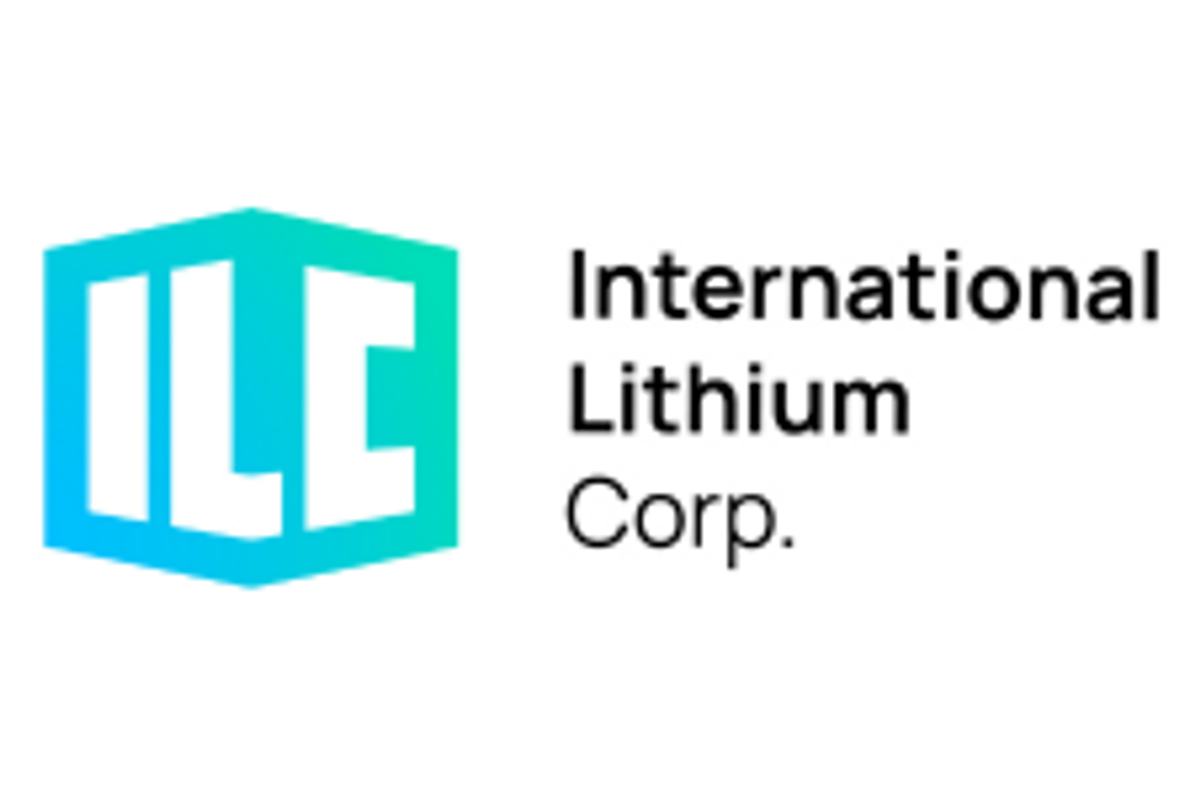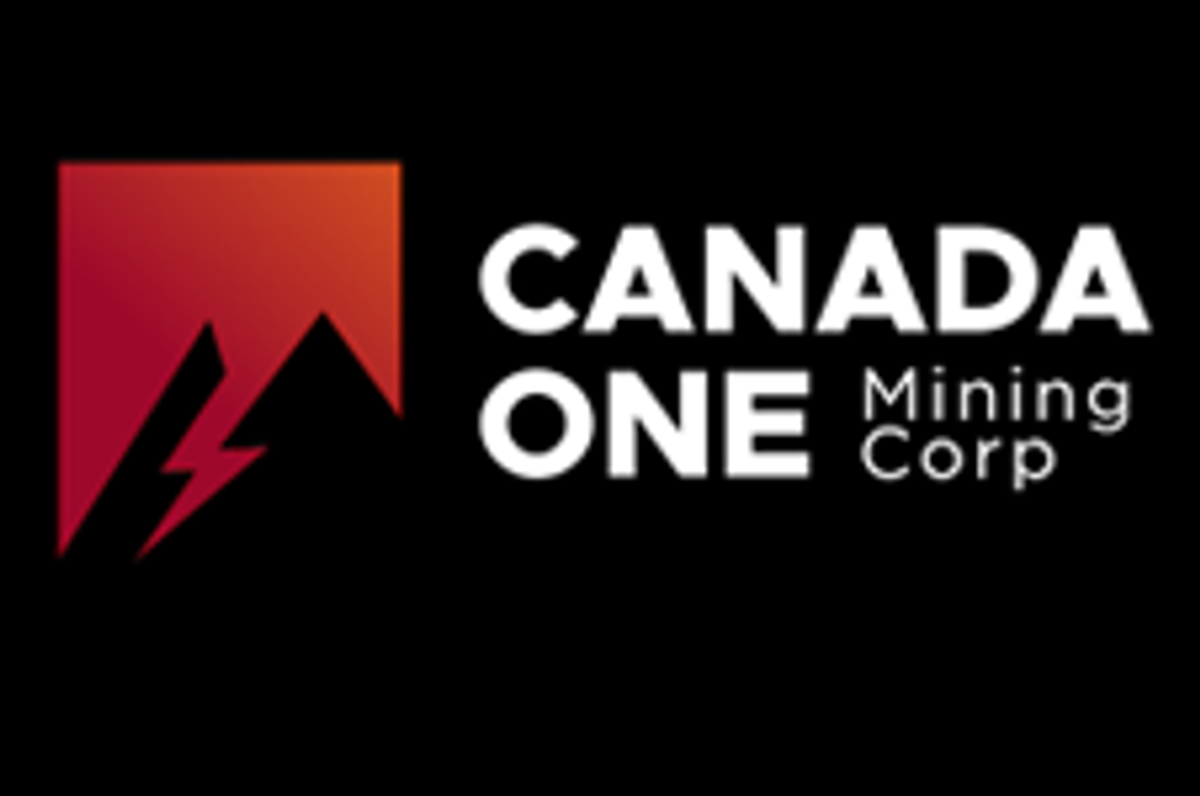
Fireweed Zinc LTD. ("Fireweed" or the "Company") (TSXV: FWZ; OTCQB: FWEDF) is pleased to announce the acquisition of the Gayna River Zinc project located in Northwest Territories, Canada. The Gayna River project contains the Critical Metals Zinc, Gallium, and Germanium in addition to Lead and Silver.
Highlights
- Fireweed has acquired the Gayna River project at a very low-cost by staking 128.75 sq-km of mineral claims in NWT.
- 28,000 m of historic drilling by Rio Tinto outlined impressive large-tonnage exploration targets.
- The geological environment has globally unique similarities to the very-high grade Kipushi mine.
- Recent academic studies indicate potential for very-high grade massive sulphide targets which were not recognized by previous owners.
Executive Statements
Fireweed CEO Brandon Macdonald commented, "The acquisition of the Gayna River project by staking is a low-cost way for Fireweed to expand our portfolio of Critical Metals projects and add some exciting exploration potential. While our focus remains on our flagship Macmillan Pass project, we are keen to explore Gayna River where we see the potential for high-grade massive sulphide mineralization. I see a similar story unfolding at Gayna River as MacPass, where Fireweed can build upon historic exploration and use modern scientific understanding of deposit genesis to unlock a potentially world-class district."
Fireweed Chief Geologist Dr. Jack Milton added, "We are excited to put the exploration methods we have honed so successfully at Macmillan Pass to use in a whole new search space at Gayna River. Leveraging our experience with gravity surveys, muon-tomography, and cutting-edge inversions, we can enable exploration for what has been previously difficult to find – the high-grade centers of large zinc systems. With this new technology we expect to target high-grade massive sulphides with better precision and at relatively low-cost, enabling a new wave of zinc exploration and revitalizing activity at this well-renowned zinc district."
Upcoming Webinar
Tune in May 10th at 10 AM PST for Fireweed Zinc's live webinar as CEO Brandon Macdonald revisits the company's success since the start and details of what have been achieved through the years and where they are now. Fireweed's Chief Geologist, Dr. Jack Milton, outlines the company's 2021 successes, shares how Fireweed plans to build on them in 2022–2023, and provides exciting details about the exploration potential at Gayna River. The webinar registration is available at this URL:
https://6ix.com/event/revisiting-exploration-success-at-macmillan-pass-and-looking-to-the-future/
A recording of the webinar will be made available at the same URL within a week.
Gayna River Project Location and History
The Gayna River Project is located in the Mackenzie Mountains, Northwest Territories, (see Map 1) within the Gwich'in Settlement Area, the Sahtu Settlement Area, and the asserted territory of the First Nation of Na-Cho Nyäk Dun. The project is in Canada, approximately 180 km West of Norman Wells, NWT, 180 km north of the Macmillan Pass project, Yukon, and 150 km SW of the winter road between Fort Good Hope and Norman Wells, NWT. Abundant zinc-lead-silver mineralization was discovered at Gayna River in the 1970s and Rio Tinto drilled over 28,000 m in the late 1970s resulting in a large tonnage exploration target.
Rio Tinto allowed the claims to lapse believing there was low potential for a high-grade deposit at Gayna River. A recent shift in thinking behind the geological model for Gayna River shows potential for high-grade massive sulphide zones within areas that were not tested by Rio Tinto. Fireweed has acquired 100% of the Gayna River project at very-low cost by staking an area of 12,875 hectares (128.75 square kilometers) covering all the historic showings and anomalies.
Gayna River Geology and Exploration Potential
Mineralization at Gayna River occurs in veins and breccias in carbonate rocks similar to Mississippi-Valley-Type (MVT) mineralization, or Irish-type Zn-Pb mineralization. Sphalerite and minor galena occur as infill within veins, vugs, and breccias along with dolomite-calcite-quartz-pyrite. Historic grab samples contain elevated concentrations of the critical metals gallium (up to 68 ppm) and germanium (up to 15.6 ppm).
The geological environment of Gayna River is very similar to host-rocks at the high-grade Kipushi Zn-Cu-Pb-Ag-Ge mine in southern Africa. At both locations, zinc mineralization is located around large Neoproterozoic carbonate reefs – geology that is unique to only these two locations worldwide. At Kipushi, high-grade lenses of massive sulphides are located around the margins and tops of the carbonate reefs including the "Big Zinc" zone. Using Kipushi as an exploration analogue, Fireweed sees the potential for massive sulphide mineralization at Gayna River in similar reef-margin and reef-top positions that remain largely untested by historic drilling which was done on a wide-spaced grid drilling approach. The extensive zinc mineralization discovered to date on the Gayna River project is thought to represent a large zinc system that may have higher-grade centers of massive sulphide.
Fireweed cautions that although a geological comparison to the Kipushi mine has been made, the comparison is conceptual in nature, and it is uncertain if further exploration at Gayna River will result in the definition of Mineral Resources or Mineral Reserves.
Historic approaches to exploration at Gayna River relied on grid-drilling due to the typically irregular shapes of mineralized zones, sharp contacts, lack of obvious alteration, and no reliable geophysical response to the mineralization. Fireweed anticipates that modern gravity surveys and the deployment of borehole muon detectors around the favourable geological environment of the reef-tops and margins may enable the detection of density anomalies related to massive sulphide zones. This emerging muon technology has opened a search space to explore for targets that were not previously detectable by any efficient means.
Gayna River Historical Drilling and Historical Estimates
Over 28,000 metres of historic drilling at Gayna River produced historic estimates outlining the potential for large near-surface tonnages of medium zinc+lead grades over 28.5 square kilometers, demonstrating the large size potential of the hydrothermal system at Gayna River. The historic drilling intersected many zinc-rich intervals, such as 21.3 m of 8.14% zinc (hole RT-75-07), and 12.2 m of 6.65% zinc including 6.1 m of 11.25% zinc (hole RT-76-A20).
By the end of 1977, a total of 25,159 m of diamond drilling had been completed at Gayna River and formed the basis of two historical estimates. Publicly available assessment reports 1-3 , a published paper 4 , and an M.Sc. thesis 5 describe a 1977 estimate made by Rio Tinto within "Gayna River Project Report – 1977, for Rio Tinto Canadian Exploration Ltd." by R.S. Hewton (1978) of several individual areas that combine for a total of 2,436,798 tonnes of 4.58% zinc and 0.52% Pb in what was originally termed a "reserve" but does not meet the definition of a Mineral Reserve as defined in current CIM Definition Standards on Mineral Resources and Mineral Reserves. According to current standards this estimate more closely resembles an Inferred Resource; however Fireweed emphasizes that a Qualified Person has not done the necessary validation work to classify this estimate as current Mineral Resources or Mineral Reserves. It is uncertain whether the validation work or further exploration would result in the verification of this estimate as a Mineral Resource or Mineral Reserve, and Fireweed is not treating the historical estimate as current Mineral Resources or Mineral Reserves. The following assumptions were made during the calculation of this historical estimate: 1) a 2% combined Zn+Pb cutoff grade was used with a minimum width of 2.5 m (8'), 2) Values of less than 0.05% Pb were reduced to 0% Pb, 3) no allowance was made for factors that may reduce grade such as dilution or recovery, 4) the area of influence for each hole was considered as half-way to any hole containing more than 1% Zn+Pb over 2.5 m (8'), and 15 m (50') towards lower grade holes, or in directions without drillholes, 5) thickness over the area of influence was assumed to be equal to the width of an intersection where grade exceeds 2% Zn+Pb, 6) a tonnage factor of 10.5 cubic feet per ton was used (3.05 tonne/m 3 ), 7) For each area estimated, holes above 40 feet x % (Zn+Pb) over a minimum of 8' at a 2% cutoff, or holes above 60 feet% Zn+Pb regardless of grade were considered for the estimate, along with all intervening holes, regardless of grade, 8) mineralization in adjacent holes was correlated and included in the calculations only if in a roughly equivalent stratigraphic position. Work needed to upgrade or verify the historical estimates as current mineral resources includes but is not limited to: check assay validation of historical assay values; validation of drilling data; validation of geological modeling; field validation of drill collar coordinates; inspection of drill core; a geological site visit by a Qualified Person; and re-estimation using modern best practices.
The second historical estimate was more conceptual in nature and more closely resembles an Exploration Target as defined by NI-43-101 but was not originally represented as a range of tonnage and grade. Publicly available assessment reports 1-3 , a published paper 4 , and an M.Sc. thesis 5 describe a 1977 estimate made by Rio Tinto within "Gayna River Project Report – 1977, for Rio Tinto Canadian Exploration Ltd." by R.S. Hewton (1978) of potential for an Exploration Target of approximately 51 million tonnes of 5% combined zinc and lead. This estimate may be more conservatively represented as an Exploration Target of 30 to 50 Mt of 4.0 to 4.5% zinc and 0.0 to 0.5% lead. This potential quantity and grade are conceptual in nature. There has been insufficient exploration to define a Mineral Resource and it is uncertain if further exploration will result in the target being delineated as a Mineral Resource. Fireweed has not performed the work necessary to validate the historic Exploration Target and Fireweed is not treating the historical estimate as current Mineral Resources or current Mineral Reserves. The historic disclosed potential quantity was determined on the basis of the results from grid drilling 2000' centres over an area of 28.5 square kilometres, and focused grid drilling around the best holes at 200' centres – both grid drill programs resulted in approximately 13% of drillholes with intersections better than 40 feet x % with a 2% (Zn+Pb) cut-off grade and minimum width of 2.5 m (8'). Using the average thickness of mineralization of 4.54 m (14.9') and the average grade of 4.58% zinc and 0.52% lead it was then estimated that a thickness of 4.54 m of 5% combined zinc and lead was present throughout 13% of the 28.5 square kilometres drilled in order to define the potential quantity and grade of the Exploration Target. The estimate gave no consideration to potential continuity or amenability to mining.
Fireweed considers the historical estimates relevant as they demonstrate the large size potential of the hydrothermal system present at Gayna River and followed accepted practice at the time but does not consider the estimates to be reliable determinations of potential tonnage as the estimation methodology does not conform to the modern Canadian Institute of Mining, Metallurgy and Petroleum (CIM) Estimation of Mineral Resources and Mineral Reserves Best Practice Guidelines.
Qualified Person Statement
Technical information in this news release has been approved by Jack Milton, P.Geo., Ph.D., Chief Geologist and a ‘Qualified Person' as defined under Canadian National Instrument 43-101.
About Fireweed Zinc Ltd. (TSXV: FWZ; OTCQB: FWEDF ): Fireweed Zinc is a public mineral exploration company managed by a highly experienced team of mining industry professionals. The Company is advancing its 100% owned, district-scale 940 km 2 Macmillan Pass Project in Yukon, Canada, which is host to the Tom and Jason zinc-lead-silver deposits with current Mineral Resources and a PEA economic study (see Fireweed news releases dated 10 th January 2018, and 23 rd May 2018, respectively, and reports filed on www.sedar.com for details) as well as the Boundary Zone, Boundary Zone West, Tom North Zone and End Zone which have significant zinc-lead-silver mineralization drilled but not yet classified as mineral resources. The project also includes large blocks of adjacent claims (MAC, MC, MP, Jerry, BR, NS, Oro, Sol, Ben, and Stump) which cover exploration targets in the district where previous and recent work identified zinc, lead and silver prospects, and geophysical and geochemical anomalies in prospective host geology.
In Canada, Fireweed (TSXV: FWZ) trades on the TSX Venture Exchange. In the USA, Fireweed (OTCQB: FWEDF) trades on the OTCQB Venture Market for early stage and developing U.S. and international companies. Companies are current in their reporting and undergo an annual verification and management certification process. Investors can find Real-Time quotes and market information for the Company on www.otcmarkets.com . In Europe, Fireweed (FSE: 20F) trades on the Frankfurt Stock Exchange .
Additional information about Fireweed Zinc and its Macmillan Pass Project including maps and drill sections can be found on the Company's website at www.FireweedZinc.com and at www.sedar.com .
ON BEHALF OF Fireweed Zinc LTD.
" Brandon Macdonald "
CEO & Director
Neither the TSX Venture Exchange nor its Regulation Services Provider (as that term is defined in the policies of the TSX Venture Exchange) accepts responsibility for the adequacy or accuracy of this release.
Cautionary Statements
This news release may contain "forward-looking" statements and information relating to the Company and the Macmillan Pass and Gayna River Projects that are based on the beliefs of Company management, as well as assumptions made by and information currently available to Company management. Such statements reflect the current risks, uncertainties and assumptions related to certain factors including but not limited to, without limitations, exploration and development risks, expenditure and financing requirements, general economic conditions, changes in financial markets, the ability to properly and efficiently staff the Company's operations, the sufficiency of working capital and funding for continued operations, title matters, First Nations relations, operating hazards, political and economic factors, competitive factors, metal prices, relationships with vendors and strategic partners, governmental regulations and oversight, permitting, seasonality and weather, technological change, industry practices, and one-time events. Additional risks are set out in the Company's prospectus dated May 9, 2017, and filed under the Company's profile on SEDAR at www.sedar.com . Should any one or more risks or uncertainties materialize or change, or should any underlying assumptions prove incorrect, actual results and forward-looking statements may vary materially from those described herein. The Company does not undertake to update forward‐looking statements or forward‐looking information, except as required by law.
The historic drilling and rock assay data referred to in this news release have not been independently validated but are considered broadly reliable as the data are derived from publicly available assessment reports authored by Professional Engineers or Professional Geologists.
References
1 2001, Downie, C.C., Geological Report for the Gayna River Property. NWT Assessment Report 084410.
2 2004, Sharp, R.J., Geological Report for the Gayna River Property. NWT Assessment Report 084713.
3 2008, Wallace, B., Atherton, C., & Sharp, R.J., Geological Report for the Gayna River Property. NWT Assessment Report 085334.
NWT Assessment Reports available at https://app.nwtgeoscience.ca/SearchHome.aspx
4 1982, Hewton, R.S., Gayna River: a Proterozoic Mississippi Valley-type zinc-lead deposit. Precambrian Sulphide Deposits, HS Robinson Memorial Volume: Geological Association of Canada, Special Paper , 25 , pp.667-700.
5 1979, Hardy, J.L. Stratigraphy, Brecciation, and Mineralization, Gayna River, Northwest Territories, M.Sc. thesis, University of Toronto.
Map 1 – Location of the Gayna River claims, Northwest Territories, and Macmillan Pass claims, Yukon, Canada is available at https://www.globenewswire.com/NewsRoom/AttachmentNg/6dc5c753-aa19-4853-a054-28435125ab90
Contact:
Brandon Macdonald
Phone: (604) 646-8361






